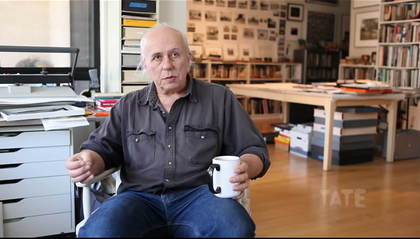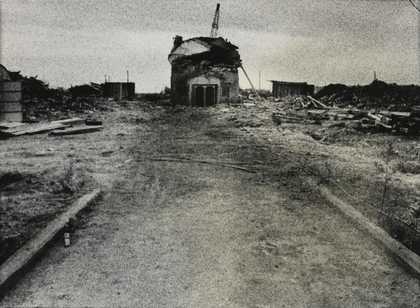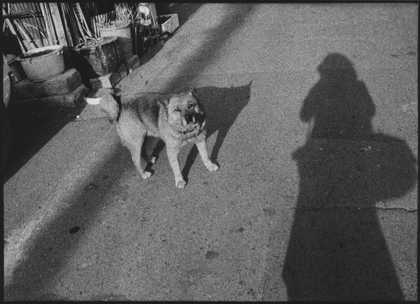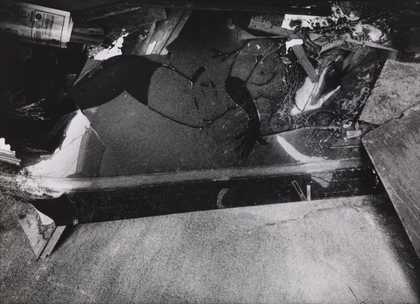I was born in a town called Yokosuka, known for the American base located there. I had the urgency to get out of that town. I started photography to ascertain my origins. These series of photographs show my beginning as a photographer. You can feel that conviction from the photographs.
I hate Yokosuka. Hate is a strong word, but I’m not fond of the way the town exists. Before the war, Yokosuka was a Japanese naval base, and since then it became an American naval base. So in a sense it is a town full of wounds. I find traces of wounds beautiful; there is part of me that is attracted to these negative beauties.
You can take photographs of places where time is stored and compressed, including the lost moments and articles from the past. This is a photograph of my local cinema from when I was a high-school student. It’s gone now.
Taking a photograph is a straightforward action; you always encounter something. But the darkroom process is a lot more conceptual, physical and psychological. I took photographs to be in the darkroom. I love witnessing the whole world emerge when you print. I felt the sense of being in a dialogue with the world.
My photographic series all have a social message, and I’m aware that they appear to be archival documents. But I insisted that photographs are not a record but a created reality. The place in the photographs doesn’t really exist; it is a town I created through photography. Photographs appear differently depending on time and place where you look at them. Looking at them now, I’m getting a whole new perspective. They are both photographic and not photographic at the same time. All these small photographs are my life itself and the evidence of my life.
Everyone thinks this little girl is me; I’m photographing myself. She must be an old lady now that 36 years have passed.






